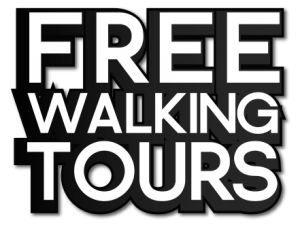The Ultimate Neighborhood Guide to Budapest: Castle Hill
Budapest is divided into 23 districts, with tourists frequently spending most of their time in District 1 and District 5, situated in the downtown area on the Pest side of the Danube River. Nestled on the Buda side of the Danube River, Budapest’s Castle Hill, also known as District 1, is a historical treasure trove that will transport you through centuries of captivating stories. With its rich history, stunning landmarks, and quaint streets, it’s a neighborhood that combines the old and the new, creating a truly unforgettable experience. In our first part of the neighborhood guide to Budapest, we share everything you need to know about the most important sight of Buda, Castle Hill.
A Walk Through History
The Castle Hill district stands as a testament to Budapest’s storied past. Rising 60 meters above the Danube River, it has been a hub of activity since prehistoric times. This neighborhood has witnessed over 30 sieges, invasions, and countless reconstructions, making it a true survivor. The 1686 siege against the Ottoman Turks marked the transition to Baroque-style architecture, and even after World War II, Castle Hill has maintained its historic charm.
Must-Visit Landmarks
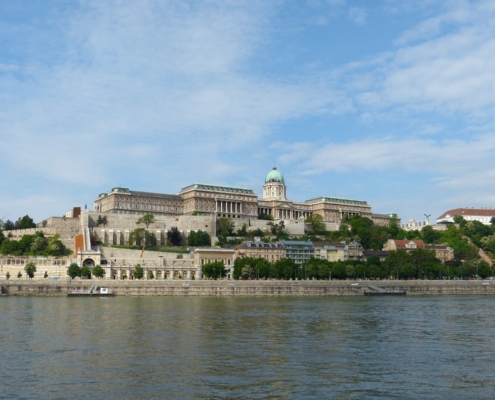
- Buda Castle (Royal Palace): This majestic structure, once a royal residence of the Hungarian kings, now houses the Budapest History Museum and the Hungarian National Gallery, offering a window into Hungary’s cultural heritage. The entrance fee to the National Gallery is 3,400 HUF, and the entrance fee to the Budapest History Museum is 3,800 HUF. Budapest History Museum focuses on the turbulent history of the 2,000 years of the city now known as Budapest, showcasing what the once separate towns of Buda, Pest, and Obuda were like.
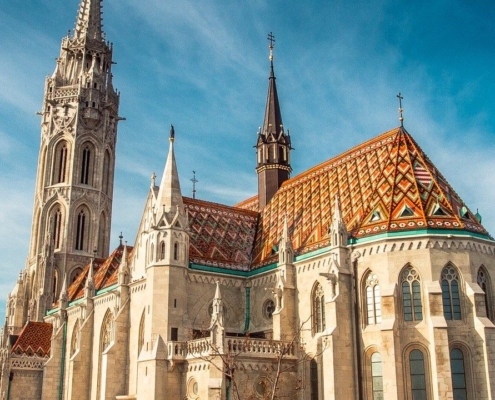
- Matthias Church: With its intricate Gothic architecture and beautifully decorated interior, it’s a masterpiece. It is open from Monday to Saturday from 9 am to 5 pm and on Sunday from 1 pm to 5 pm, with an entrance fee of 2,500 HUF.
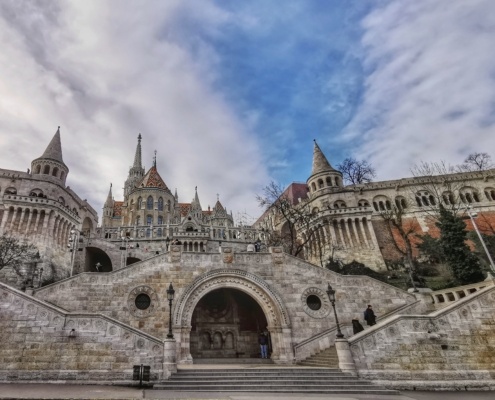
- Fisherman’s Bastion: For panoramic views of Budapest, visit this fairy-tale-like terrace, especially enchanting when illuminated at night. The entrance fee is 1,200 HUF, and it is free to visit from 7 pm to 9 a.m.
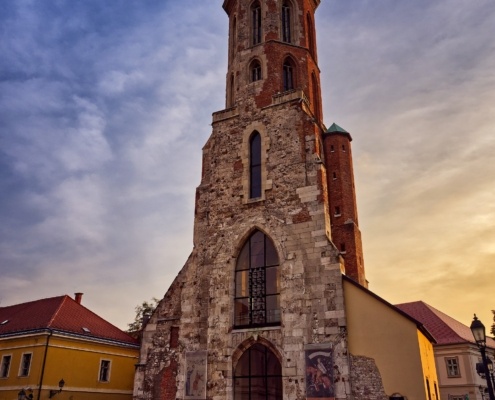
- Maria Magdalena Tower: Explore the Bell Tower, a survivor of numerous sieges, and enjoy the stunning panoramic view of Budapest. If you feel fit enough, there are about 170 steps to climb. The 24 tower bells ring every hour and are truly melodious. The bronze replica of the 1,000-year-old Hungarian coronation mantle on the church grounds is very interesting in the courtyard of the church.
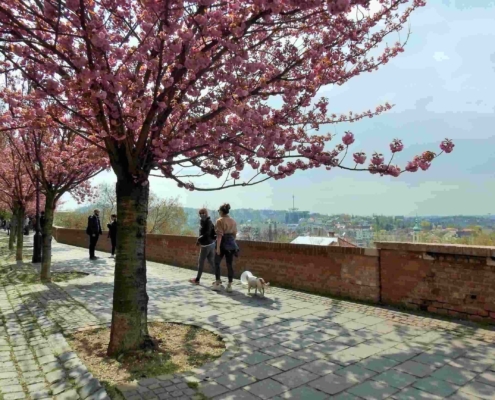
- Castle Hill Promenade (Tóth Árpád Sétány): This picturesque passage adorned with cherry blossoms in spring offers a perfect selfie spot. Among the sights is the Centenary of the unification of the Pest and Buda side of the river Danube, well created by the famous Zsolnay ceramic factory. You can also find stairs and an elevator leading you to the Hospital in the Rock and Nuclear Bunker Museum. The spectacular view of Buda Hills will definitely make you stop for a moment to take a few selfies.
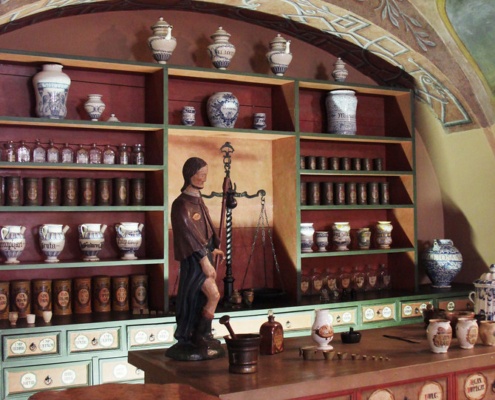
- Golden Eagle Pharmacy: Step into Budapest’s first pharmacy, now a quirky museum. It’s a small, two-room museum that contains a mock-up of an alchemist’s laboratory, with dried bats and stuffed crocodiles suspended from the ceiling, a small ‘spice rack’ used by 17th-century travelers for their daily fixes of curative herbs, curiously shaped glassware, and a blackened mummy head.
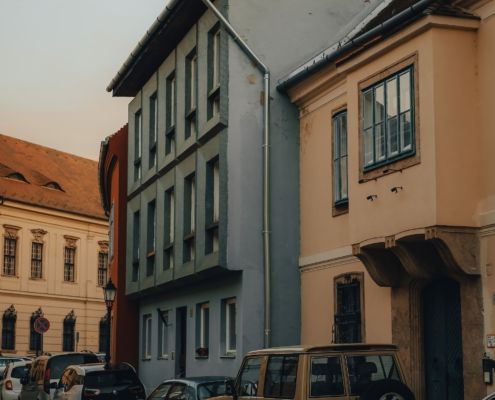
- Medieval Jewish House of Prayer: The museum includes a small section of ancient gravestones at the entrance. You then walk past a courtyard and visit a small museum room. It was excavated in the mid-1960s, which was followed by renovation works. There are medieval frescoes inside the synagogue with a Star of David that is accompanied by Aaron’s blessings. You can also find Jewish tombstones inside the building, a place of significance. There is another Askenaz shul with unexcavated remains of the 16th century buried beneath private property.
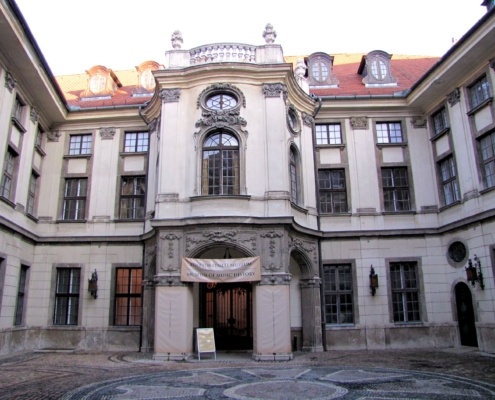
- Museum of Music History: Discover the rich musical heritage of Hungary and Europe. The Museum of Music History is a museum in Budapest that collects and displays objects related to Hungarian and European music history, including manuscripts, letters, photographs, musical instruments, and legacies of famous composers and musicians. A highlight of this museum is the recording gramophone used by Hungarian composers Bela Bartok and Zoltan Kodaly to capture the authentic folk music of many nations living together in the Carpathian Basin. It is open from Tuesday to Sunday from 10 am to 4 pm, with an entrance fee of 2,000 HUF.
Where to Eat and Find Toilets
- PRIMA: Grab a snack or traditional Hungarian pastries just opposite Matthias Church in Tarnok utca. Bakery products, sandwiches, soft drinks, and dairy products are all available, with a rich variety of local and imported products and a good wine choice.
- There are four public toilets available near Fisherman’s Bastion, Maria Magdalena Tower, Rock Hospital and the National Gallery.
Exploring the District
Besides historical sites, Castle Hill boasts cobblestone streets, charming cafés, and unique shops. Take a leisurely stroll along Tárnok Street, appreciate the historical architecture, and savor Hungarian pastries or you can check out the oldest confectionery in the town.
Getting There
Access Castle Hill via the funicular, a scenic walk across the Chain Bridge from Pest, or public transportation. Alternatively, meet us at Batthanyi ter metro exit’s meeting point at 2:30 pm daily for our Free Buda Castle Hill Tours.
In Conclusion
Budapest’s Castle Hill, District 1, is a neighborhood where the past seamlessly blends with the present. It’s a must-visit for history enthusiasts and anyone seeking to immerse themselves in the rich culture and stunning architecture of this remarkable city. Stay tuned for more neighborhood guides as we continue to explore Budapest’s diverse and vibrant districts, and don’t forget to join our daily Free Buda Castle Hill Tours.

